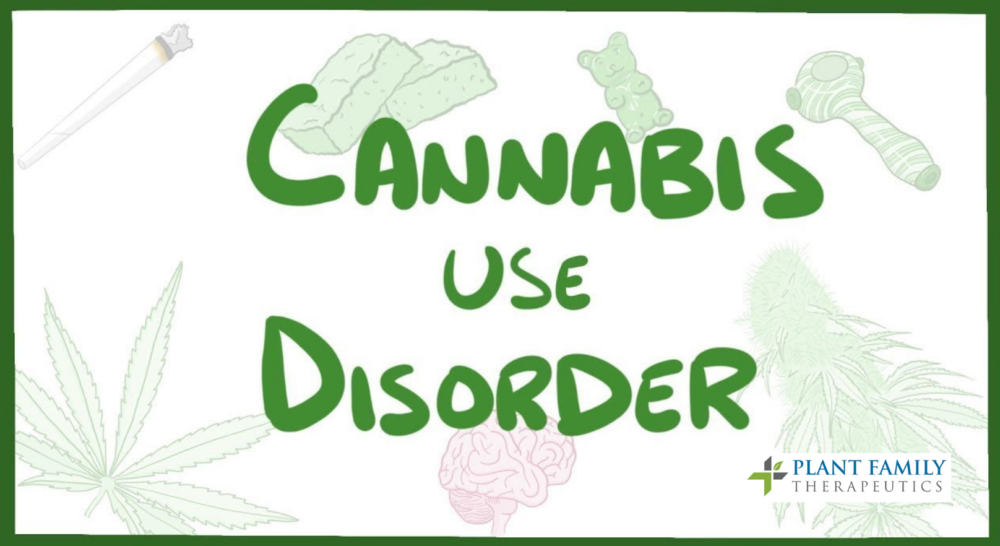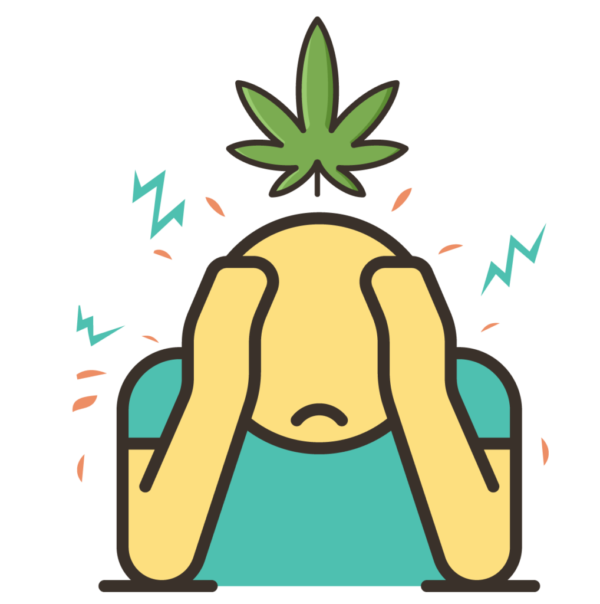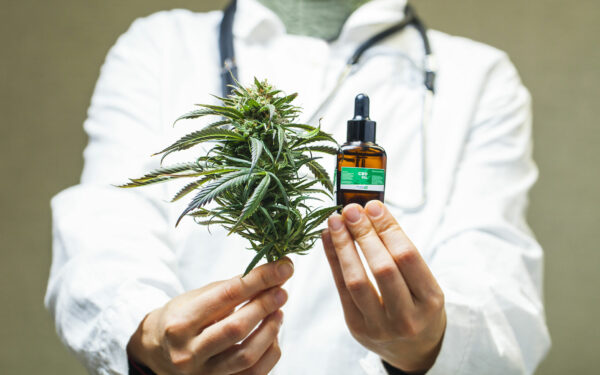
March 9, 2021 – By Sandy Yanez
High tolerance is costing you more than just your money.
Cannabis use has become increasingly accepted socially and legally, for both recreational and medicinal purposes. Without reliable information about the effects of cannabis, people cannot make informed decisions regarding its use
Cannabis tolerance develops when the medication no longer works as well as it once did. Cannabis dependence or addiction can develop from tolerance by the continued use and adding higher and higher doses in an attempt to produce results.
Statistics
Current statistics show in 2020 there were 41.9 million cannabis users, and it is predicted in 2021 this will increase to 42.9 million, and by 2025 it is estimated there will be over 46 million cannabis users. Of these numbers 9% of the cannabis users will develop cannabis use disorder. Now 9% doesn’t sound like a large number but that’s roughly 3,690,000 million people who will become dependent on cannabis.
Cannabis use disorder can happen from a few different factors. 1) Cannabis use disorder can be caused from a lack of education provided form dispensaries and physicians to the patients, allowing the patient to self-medicate at the wrong dose, 2) the patient has an underlying state which they might be trying to run from and use cannabis as the escape, 3) or a genetic variant.
CUD Defined
Cannabis use disorder (CUD) is defined as the continuous use of cannabis despite harmful or adverse effects. CUD by the Diagnostic and Statistical Manual of Mental Disorders DSM-5, is defined as having a minimum of two of the following symptoms:

Long Term Effects
Long term effects of cannabis use disorder include:
Treatment
Currently there are no FDA approved medications to treat CUD. Treatment for CUD includes the medications Lofexidine, which is used for opiate withdrawal and has serious side effects that may affect the heart, blood vessels, and may cause very low blood pressure. Gabapentin is an anti-convulsant and is also used to treat neuropathic pain. Side effects to gabapentin include difficulty with coordination and concentration with possible depression and suicidal tendencies. N-acetylcysteine, originally designed for treating Tylenol overdose, inhibits FAAH which may contribute to reduced withdrawal symptoms.
Therapies used in conjunction with medications include cognitive behavioral therapy (CBT) which teaches patients strategies to identify and correct behaviors that lead to substance abuse, contingency management (CM) which monitors target behaviors and rewards possible behavior changes and can lead to longer periods of abstinence during treatment, and motivational enhancement treatment (EMT) which is designed to engage individuals who are ambivalent about treatment. Holistic treatment known as complementary and alternative medicine (CAM) incorporates meditation, biofeedback, hypnosis, or progressive muscle relaxation, as part of the recovery practice.
CBD
Research has found that cannabidiol (CBD) is successful in treating CUD and the patient does not have to stop cannabis use to see results. CBD can either dampen an out-of-control high, balance it, or boost it. This paradoxical effect of CBD is dependent upon an often-overlooked factor: dosage. Low doses of CBD will enhance the effects of THC, which in turn reduces the increased use of THC to receive the desired effects. A high dose of CBD will reduce and almost totally inhibit the euphoric effects of THC, while retaining THCs benefits. Scientists found that THC and CBD are the power couple of cannabis compounds—they work best together.

“Start low, go slow”
“Start low” refers to cannabis’ concentration of the intoxicating cannabinoid THC. Commercial cannabis flower typically ranges from 17% to 30% THC, and new users should aim for the low end of that spectrum. Selecting a cultivar that contains a combination of THC and the non-intoxicating cannabinoid CBD can also help minimize THC’s potential to cause anxiety and paranoia.
“Go slow” refers to the rate of cannabis inhalation/ingestion. When smoking or vaping cannabis flower, take a small puff or two, then wait 10-20 minutes to gauge the effects.
Cannabis that is not inhaled but ingested (cannabis-infused food items), known as “edibles”, comes with its own dosing rules. Whereas smoking or vaping cannabis delivers effects within minutes, ingesting cannabis requires a wait with effects not felt for 1-2 hours after ingestion. And while the effects of smoked cannabis dissipate within an hour or two, the effects of edible cannabis can stick around for upwards of six hours. It is best for beginners’ to start with smoking/vaping or tinctures rather than ingesting edible cannabis.
Tips for Recovery Before it Escalates to Addiction:
Patterns of cannabis use develop without much thought, however, changing them requires thought and intentional action. Luckily, the staff here at Plant Family Therapeutics cares about you and your health. If you feel you need help with Cannabis Use Disorder, please contact us for a free professional medical cannabis consult.
References
Dean, O., Giorlando, F., & Berk, M. (2011). N-acetylcysteine in psychiatry: Current therapeutic evidence and potential mechanisms of action. Journal of psychiatry &neuroscience: JPN, 36(2), 78-86. https://doi.org/10.1503/jpn.100057
Drugs.com (na) Lofexidine and Gabapentin https://www.drugs.com/
Freeman, T., Hindocha, C., Baio, G., Shaban, N., et al. (2020). Cannabidiol for the treatment of cannabis use disorder: A phase 2a, double-blind, placebo-controlled, randomized, adaptive Bayesian trail. The Lancet Psychiatry, 7(10)838-874. https://doi.org/10.1016/S2215-0366(20)30290-X
Hindocha, C., Freeman, T., Schafer, G., et al., (2019). Acute effects of cannabinoids on addiction endophenotypes are moderated by genes encoding the CB1 receptor and FAAH enzyme. Wiley. v25 (3) https://doi.org/10.1111/adb.12762
Marijuana statistics (2019) Talbottcampus.com. https://talbottcampus.com/marijuana-statistics/
NIDA (2020). Available Treatments for Marijuana Use Disorders. https://www.drugabuse.gov/publications/research-reports/marijuana/available-treatments-marijuana-use-disorders.
Patel, J & Marwaha, R. (2020) Cannabis use disorder. StatPearls, Treasure Island (FL). P1-28 https://www.ncbi.nlm.nih.gov/books/NBK538131/#_NBK538131_pubdet_
Sherman, B. J., & McRae-Clark, A. L. (2016). Treatment of cannabis use disorder: Current science and future outlook. Pharmacotherapy, 36(5), 511–535. https://doi.org/10.1002/phar.1747
Solowij, N., Broyd, S., Greenwood, L., van Hell, H., Martelozzo, D., Rueb, K., et al., (2019). A randomised controlled trial of vaporised Δ9-tetrahydrocannabinol and cannabidiol alone and in combination in frequent and infrequent cannabis users: Acute intoxication effects. European Archives of Psychiatry and Clinical Neuroscience. doi:10.1007/s00406-019-00978-2